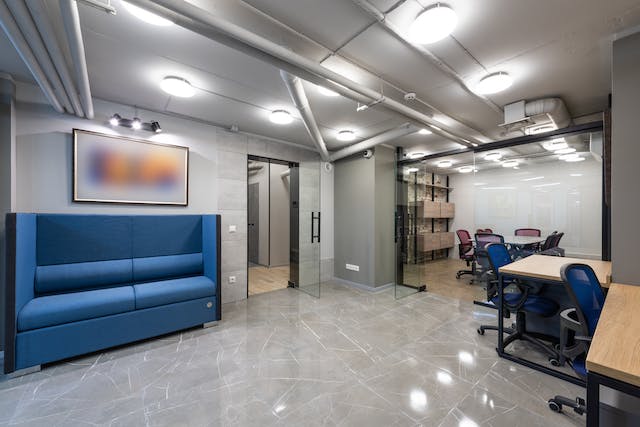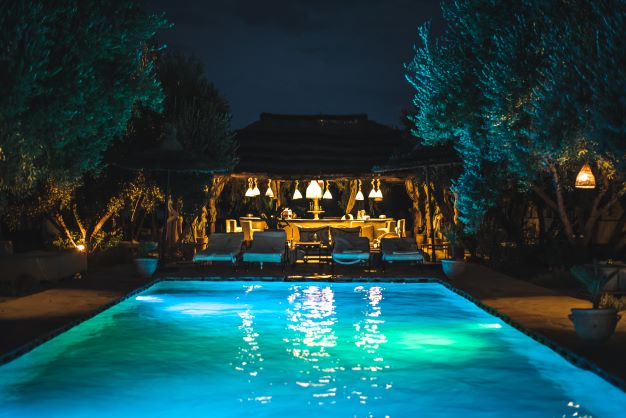Designing an office isn’t just about picking the right furniture or choosing a color palette. It’s about creating a space that promotes productivity, enhances well-being, and reflects a company’s values.
Whether you’re setting up a new office or revamping an old one, understanding the essentials of office interior design can lead to better workdays for everyone involved. Let’s delve into the basics.
1. Functionality First
Before diving into aesthetics, think about how the space will be used:
- Desk Arrangements: Consider whether an open floor plan, private cubicles, or a mix of both will work best for your team.
- Meeting Spaces: Ensure there are ample spaces for collaboration, from large conference rooms to smaller breakout areas.
- Storage: Decluttering is key. Think about shelving, filing cabinets, and storage rooms to keep things organized.
2. Lighting Matters

Good lighting can boost mood and productivity:
- Natural Light: If possible, maximize the amount of natural light. It’s not only eco-friendly but also beneficial for well-being.
- Artificial Light: Choose LED lights that mimic natural daylight. Avoid harsh fluorescents. You can see offices like Google and Apple to take some inspiration.
3. Comfort is Key
Employees spend many hours at the office, so comfort should be a top priority:
- Ergonomic Furniture: Invest in chairs and desks that support posture and reduce the risk of back or neck pain.
- Temperature Control: Ensure that heating and cooling systems work efficiently. Providing options like fans or space heaters can also be helpful.
4. Flexibility and Adaptability
The needs of an office can change over time:
- Modular Furniture: Consider furniture that can be easily moved or reconfigured.
- Multi-purpose Spaces: Design spaces that can serve multiple functions, like a break room that can also host informal meetings.
5. Biophilic Elements

Bringing nature into the office can have multiple benefits:
- Plants: They not only improve air quality but also reduce stress. Even low-maintenance plants like succulents can make a difference.
- Nature-inspired Colors: Shades of green, blue, or earthy tones can evoke a sense of calm.
6. Personal and Collaborative Spaces
Balance is essential in office design:
- Private Spaces: For tasks that require focus, ensure there are quiet zones or private booths.
- Open Spaces: For brainstorming or team projects, open spaces with comfy seating can promote collaboration. Offices like Worki from Mongolia are a great example of this.
7. Reflect the Brand
Your office space can be a physical representation of your company’s values and brand:
- Colors: Incorporate brand colors subtly in the decor.
- Mission Statement: Displaying the company’s mission statement or values can be both motivational and decorative.
8. Technology Integration
Today’s offices rely heavily on technology:
- Power Outlets: Ensure there are ample power sources for computers, phones, and other gadgets.
- Tech-friendly Furniture: Desks with built-in charging ports or conference tables equipped for video calls can be significant assets.
9. Aesthetics and Decor

While functionality is vital, aesthetics play a role in setting the mood:
- Wall Art: Choose art that resonates with the company culture. It could be motivational posters, abstract art, or even photographs.
- Textures and Materials: Mix and match different textures, from smooth tabletops to plush sofas, for a rich feel.
10. Health and Safety
An office should be a safe space for everyone:
- Clear Pathways: Avoid clutter or obstacles in walkways to prevent accidents.
- Sanitation: Especially in today’s world, ensure there are provisions for sanitizing hands and maintaining cleanliness.
Conclusion
A well-designed office is more than just a place to work; it’s a space that encourages growth, collaboration, and innovation. By considering the essentials of office interior design, one can create an environment that not only looks good but also feels good to be in. Whether it’s the lighting, the furniture, or the decor, every element plays a role in shaping the daily experiences of those who work there.




